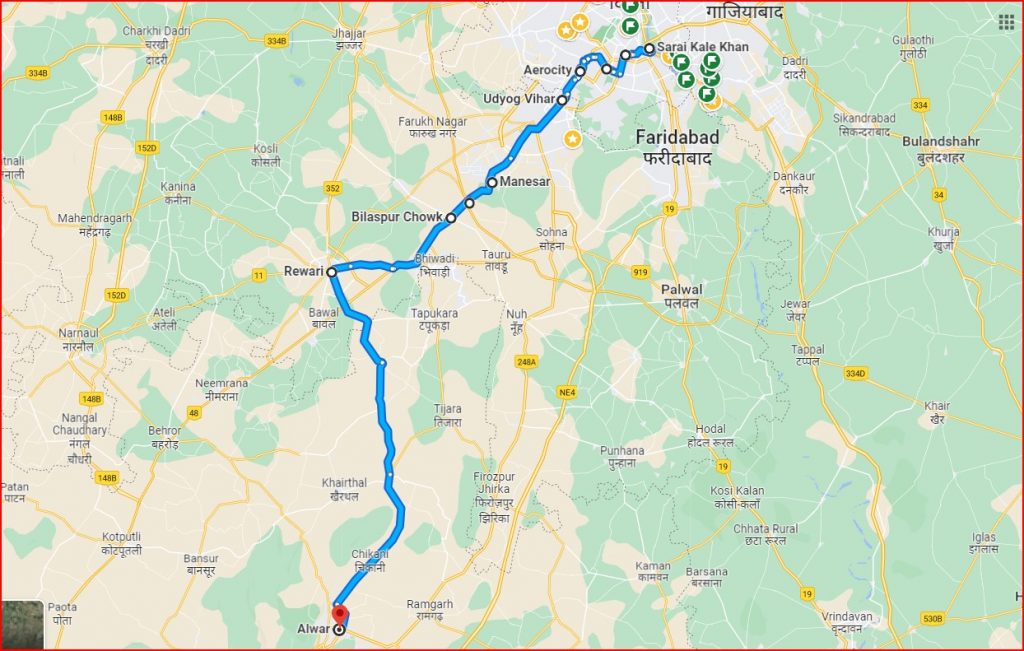Contents
Delhi Alwar RRTS
The Delhi-Alwar Regional Rapid Transit System (RRTS) is a 164-kilometer semi-high-speed rail corridor that is currently under construction. It will connect Delhi with the peripheral towns of Manesar, Rewari, and Alwar, and is expected to be completed by December 2024. The Delhi-Alwar RRTS, a forward-thinking high-speed rail project, is planned to change communication between Delhi and its adjacent towns of Gurgaon, Rewari, and Alwar.
The RRTS is meant to travel at a maximum speed of 180 kilometres per hour and an average speed of 105 kilometres per hour. It will feature a total of 18 stations, including 5 subterranean stations in the first 35 kilometres and 11 elevated stations in the next 71 km.
The Delhi-Alwar Regional Rapid Transit System (RRTS) is a 164-kilometre-long semi-high-speed rail track that connects Delhi, Gurgaon, Rewari, and Alwar. It is one of three RapidX lines proposed as part of the National Capital Region Transport Corporation’s (NCRTC) Phase 1 Rapid Rail Transport System.
The RRTS is projected to be finished by December 2024, greatly shortening travel time between Delhi and its outskirts. The journey time between Delhi and Alwar, for example, will be reduced from 3 hours to 1 hour and 45 minutes.
Delhi Alwar RRTS Station List
The Delhi-Alwar RRTS would be connected with existing infrastructure such as the Delhi Metro, bus networks, and road networks. This will make it easier for individuals to switch between means of transportation and get to their destination swiftly and effectively.
Here are some examples of how the Delhi-Alwar RRTS would connect to existing infrastructure:
Delhi Metro: At a number of stations, including Sarai Kale Khan, INA, Munirka, Aerocity, and Gurugram Sector 17, the Delhi Metro will be connected with the RRTS. This will make it easier for users to switch between the two platforms.
Bus networks: The RRTS stations will be near bus stops, making it easier for people to switch between modes of transit.
Road networks: The RRTS stations will be well-connected to the road network, allowing passengers to easily get to and from the stations by vehicle, taxi, or rickshaw.
The Delhi-Alwar RRTS will have a total of 18 stations:
| Serial No. | Station Name |
| 1 | Nizamuddin/Sarai Kale Khan |
| 2 | INA |
| 3 | Munirka |
| 4 | Aerocity |
| 5 | Udyog Vihar |
| 6 | Gurgaon Sector 17 |
| 7 | Rajiv Chowk |
| 8 | Kherki Daula |
| 9 | Manesar |
| 10 | Panchgaon |
| 11 | Bilaspur Chowk |
| 12 | Dharuhera Depot |
| 13 | MBIR |
| 14 | Rewari |
| 15 | Bawal |
| 16 | SNB |
| 17 | Khairthal |
| 18 | Alwar |
Delhi Alwar RRTS Route Map
The Delhi-Alwar RRTS will start from Sarai Kale Khan in Delhi and pass through INA, Munirka, Aerocity, Udyog Vihar, Gurgaon Sector 17, Rajiv Chowk, Kherki Daula, Manesar, Panchgaon, Bilaspur Chowk, Dharuhera Depot, MBIR, Rewari, Bawal, SNB, Khairthal, and finally reach Alwar.
Here is the route map for Delhi Alwar RRTS

Delhi Alwar RRTS Ticket Price
The ticket price for the Delhi-Alwar RRTS is not yet finalized. However, it is expected to be similar to the ticket price for the Delhi Metro. The Delhi-Alwar RRTS would be physically integrated as well as integrated with current infrastructure fare mechanisms. This would allow customers to purchase RRTS tickets using the same fare system that they use for other forms of transport in the National Capital Region. The integration of the Delhi-Alwar RRTS with existing infrastructure is a critical component of the project since it will make the RRTS more accessible to the public.
Benefits of the Delhi Alwar RRTS
- Travel time will be greatly reduced: The RRTS will significantly cut travel time between Delhi and its outskirts. The journey time between Delhi and Alwar, for example, will be reduced from 3 hours to 1 hour and 45 minutes.
- Congestion reduction: The RRTS is projected to alleviate road congestion as people move to this faster and more efficient means of transportation.
- Improved air quality: Because the RRTS is an electric rail system, it emits no pollutants. This will contribute to better air quality in the National Capital Region.
- Improved connection: The RRTS will boost communication between Delhi and its outskirts, making it simpler for people to live, work, and study in various regions of the region.
- Economic growth and job creation: The RRTS is a significant infrastructure project that is projected to spur economic development and employment creation in the National Capital Region.
The Delhi-Alwar RRTS is a major infrastructure project that is expected to have a significant impact on the region. It will provide a faster, more efficient, and more environmentally friendly way to travel between Delhi and Alwar.
when is project likely to be completed?
where is the location for Kherki Daula station